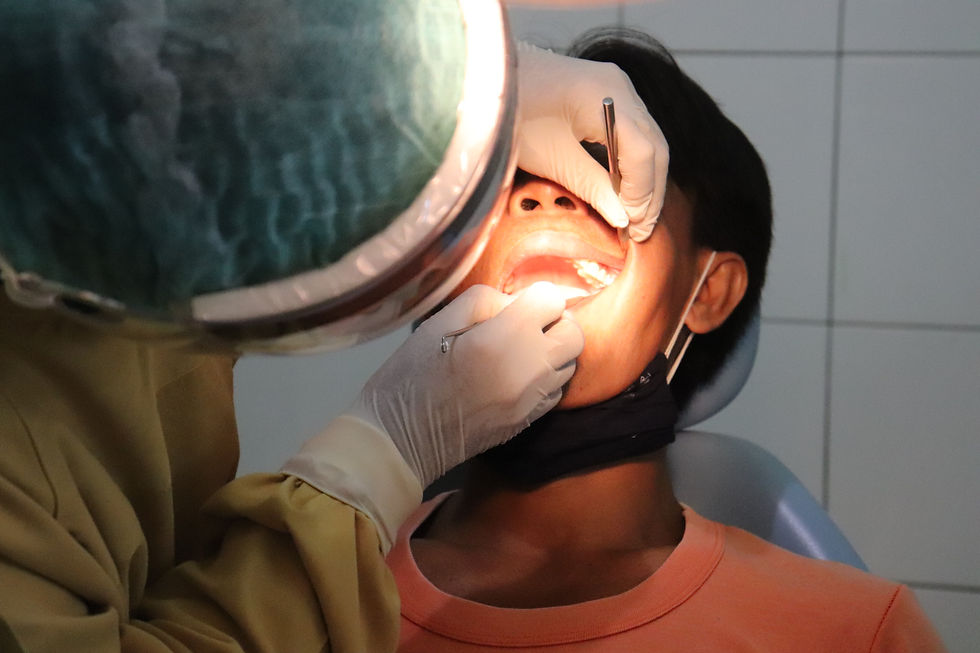Pain, Buffers, and the Truth Your Body Tells
- Sally Luehman

- Aug 19
- 3 min read

We all know what pain feels like. Sometimes it’s sharp and demanding—like a toothache that makes you want to crawl out of your own skin. Other times it’s quieter, humming in the background while we go through the motions of our daily lives.
Lately, I’ve been reminded of just how much pain teaches us. A few weeks back, I had a tooth pulled. I thought the healing would be quick. Instead, I woke up many mornings with throbbing, burning pain in my jaw that made me wonder if it would ever get better.
That toothache got me thinking.How many of us live like this every day?
Not with literal tooth pain, but with some form of lingering ache—physical, emotional, or mental—that we’ve learned to live with.
We show up for work, for family, for life.We smile and say, “I’m fine,” even when we’re not.And over time, we get used to it.
The Problem with Buffers
When we hurt, it’s human nature to reach for something to take the edge off. Pain medication, a glass of wine, extra hours at the office, a pint of ice cream, endless scrolling—whatever it takes to distract us from what we don’t want to feel.
These are what I call buffers.
Buffers don’t fix the pain; they just numb it temporarily. They delay the healing that needs to happen. And sometimes, by ignoring or covering up the real issue, we actually make it worse.
I think about a friend of mine who broke his hip years ago. He didn’t want to deal with therapy or the long recovery process, so he pushed through. He kept working, kept moving, kept pretending it wasn’t a big deal. Today, he walks with a cane and lives with permanent pain that could have been avoided if he had faced the problem earlier.
That hit me hard. How many of us are doing the same thing—not with our hips, but with our lives?
The Body Doesn’t Lie
There’s a quote I love that says, “The body doesn’t lie.”
Your body tells the truth through headaches, tight shoulders, back pain, exhaustion, eye twitches, even toothaches. Sometimes, pain is a signal that you’re growing stronger—like sore muscles after a workout. But other times, it’s a warning sign that something needs real attention.
Ignoring those signals doesn’t make them go away. It just means we’ll pay for it later.
Three Steps Toward Healing
Through this whole toothache experience, I found myself coming back to three simple ideas that apply to both physical pain and the emotional or mental pain we carry.
1. Check the source.Don’t just assume the pain is something to push through. Ask yourself: is this normal discomfort that comes with growth, or is it something deeper that needs help? Sometimes the bravest thing we can do is make the doctor’s appointment, have the hard conversation, or admit we need rest.
2. Identify your buffers.What are you doing to avoid pain? Overworking? Drinking? Scrolling? Getting wrapped up in other people’s problems? No shame here—just notice. Awareness is the first step to change.
3. Do one brave thing today.You don’t need to fix everything overnight. Just take the next right step. Make the call. Tell the truth. Do the uncomfortable thing you’ve been avoiding. One small, brave action can shift everything.
What’s Your Toothache?
So let me ask you this: What’s your version of the toothache?
What pain are you carrying quietly, hoping it will just go away on its own? What healing have you been putting off because it feels inconvenient or scary? And what would happen if you faced it—just a little—today?
Pain is part of being human. But we don’t have to let it define us. When we face it honestly, without hiding behind buffers, we open the door to real healing—and to a life that feels more free, more true, and more whole.
Your Turn:I’d love to hear from you. What’s the pain you’ve been managing instead of healing? And what one brave step can you take today toward facing it?





Comments